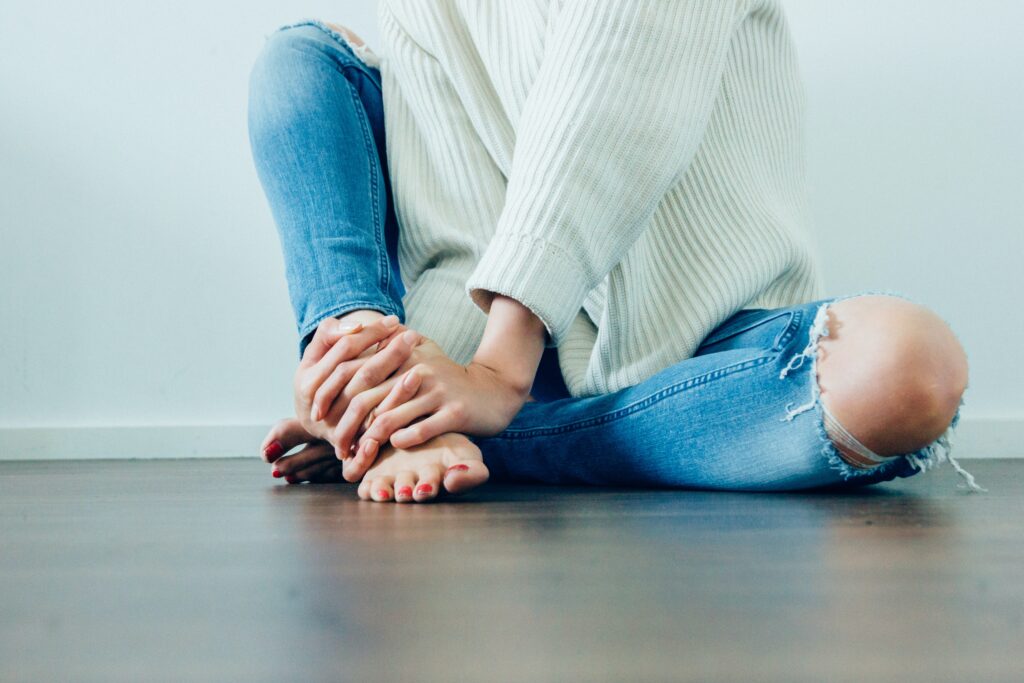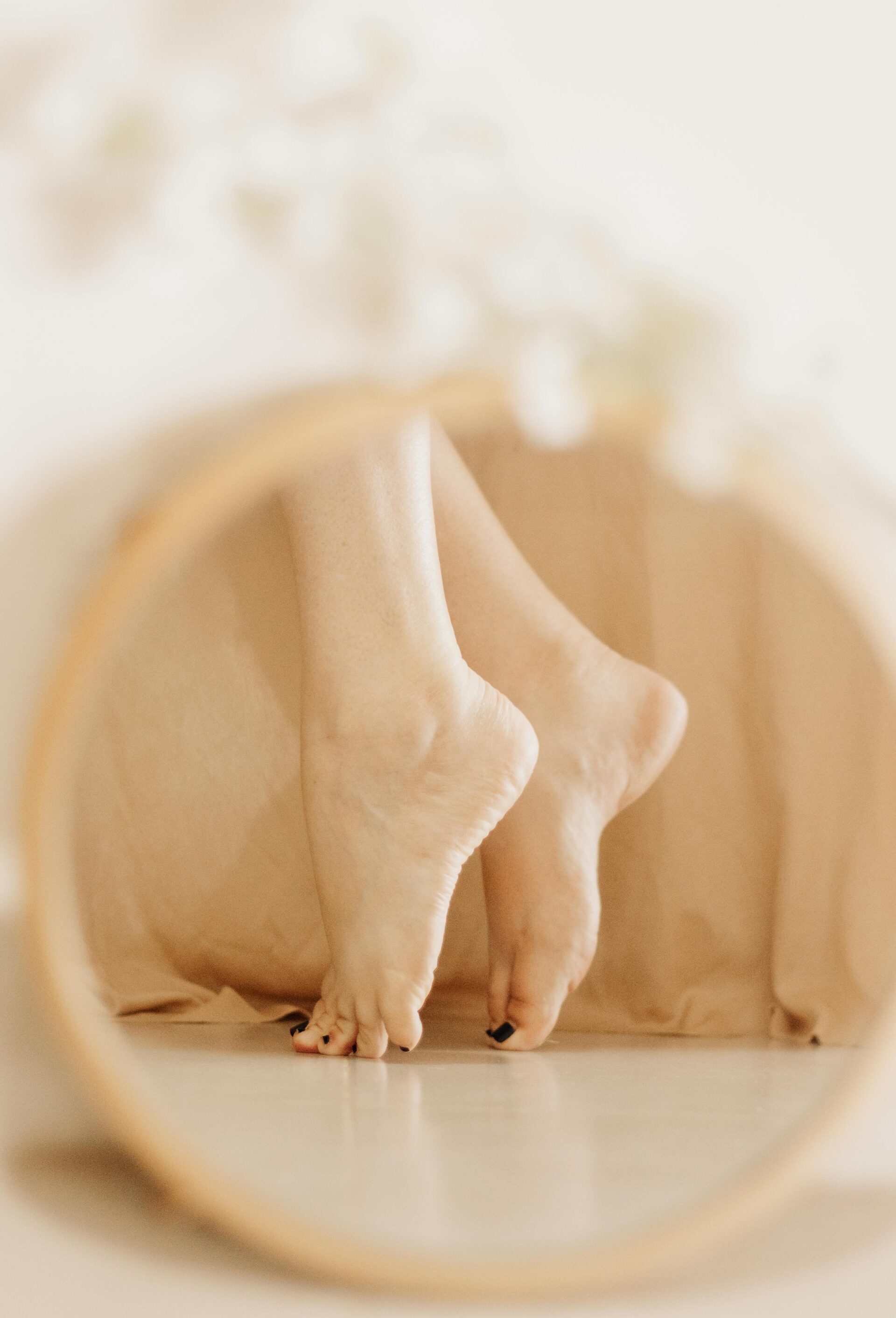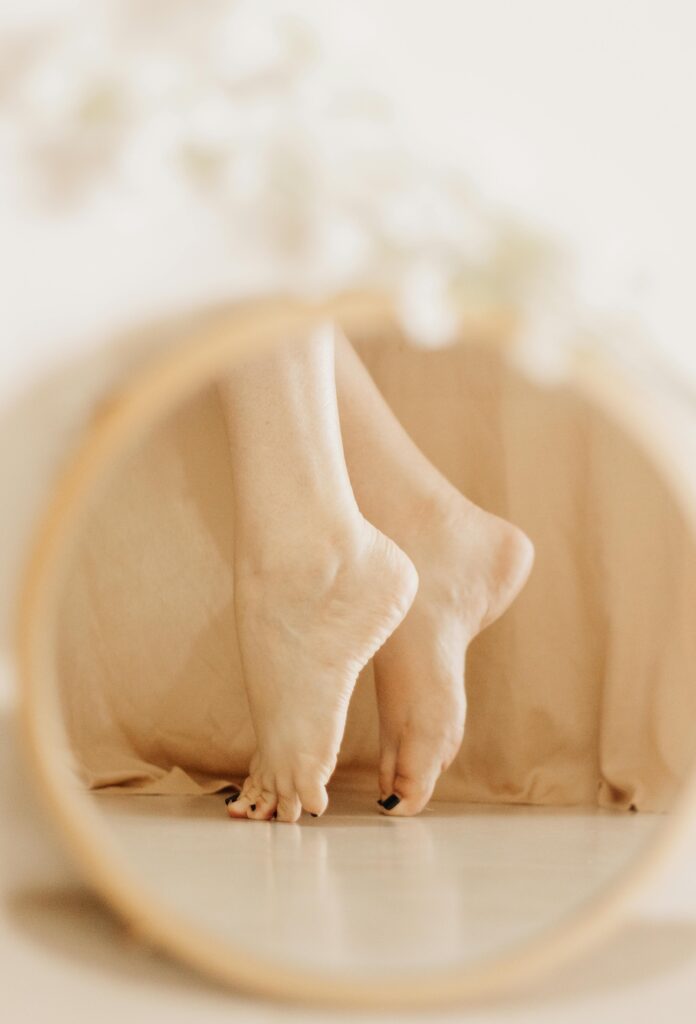What Is a Bunion?
A bunion, also known as hallux valgus, is a bony bump that forms on the joint at the base of the big toe. This common foot condition occurs when the big toe pushes against the adjacent toe, forcing the joint of the big toe to enlarge and protrude outward.
Bunions can cause discomfort, pain, and inflammation, particularly when wearing shoes or engaging in activities that put pressure on the affected area. They can also lead to changes in foot structure and toe alignment, impacting mobility and overall foot health. While bunions can develop gradually over time, they may also be exacerbated by genetics, foot shape, improper footwear, and certain medical conditions like arthritis.
Treatment options for bunions range from conservative measures like wearing supportive shoes and using orthotics to surgical intervention in more severe cases.
What Causes a Bunion?
Several factors contribute to the development of bunions, including:
- Genetics: Bunions often run in families. Certain foot shapes and inherited structural foot problems can increase the likelihood of developing bunions.
- Foot structure: Foot abnormalities, such as flat feet or low arches, can increase the risk of bunions. These conditions can alter the distribution of weight and pressure on the foot, leading to joint misalignment over time.
- Improper footwear: Wearing tight, narrow, or high-heeled shoes can force the toes into an unnatural position and increase pressure on the joint at the base of the big toe. Prolonged use of such footwear can contribute to the development and progression of bunions.
- Inflammatory conditions: Certain inflammatory conditions, such as rheumatoid arthritis, can cause inflammation and deformity of the joints, including the joints affected by bunions.
- Foot injuries: Trauma or injury to the foot, particularly to the big toe joint, can increase the risk of developing bunions.
- Occupational factors: Certain occupations or activities that involve prolonged standing or repetitive stress on the feet may contribute to bunion formation.
While these factors can increase the likelihood of developing bunions, bunions often result from a combination of genetic predisposition and environmental factors. Managing these contributing factors, such as wearing supportive footwear and maintaining a healthy weight, can help reduce the risk of bunions or alleviate symptoms.

Signs and Symptoms of Bunions
Bunions typically manifest as a bony bump on the base of the big toe joint. Here are some common signs and symptoms associated with bunions:
- Visible bump: The most noticeable sign of a bunion is a bulging bump on the side of your foot at the base of your big toe. This bump may be red, swollen, and tender to the touch.
- Toe deviation: The big toe may point towards the other toes rather than straight ahead, causing it to crowd against them.
- Swelling and inflammation: The affected area may appear red, swollen, and tender.
- Pain: Bunions can cause pain or discomfort, especially when walking or wearing shoes that crowd the toes or put pressure on the affected area.
- Restricted movement: The range of motion of the big toe may be limited due to the stiffness and inflammation associated with a bunion. This can make it difficult to walk or engage in your normal activities comfortably.
- Corn or callus formation: Due to friction and pressure from footwear, corns or calluses may develop on or between the toes.
- Difficulty finding comfortable shoes: Shoes that are too narrow or tight can make your bunion pain worse. This makes it challenging to find footwear that fits comfortably.
- Development of hammertoes: In some cases, bunions can lead to the development of hammertoes, where the toes bend abnormally at the middle joint.
If you think you have a bunion, or you’re experiencing any of these symptoms, you should get in touch with your podiatrist to get an accurate diagnosis and treatment recommendations.
How to Treat a Bunion
While bunions may not always require medical intervention, they can progress and cause significant discomfort if left untreated. Treatment options for bunions vary depending on the severity of the condition and the individual’s symptoms.
Conservative treatment options for bunions usually focus on relieving symptoms, slowing the progression of the condition, and improving foot function. Here are some approaches commonly used:
- Footwear modifications: Wearing shoes with a wide toe box and low heels can help reduce pressure on the bunion and alleviate discomfort. Avoiding narrow or tight shoes that squeeze the toes is important to prevent the worsening of the condition.
- Padding and orthotic devices: Cushioning pads or splints can help protect the bunion and reduce friction and pressure on the affected area. Custom orthotics may also be prescribed to support the foot and correct any underlying biomechanical issues contributing to the bunion.
- Toe spacers or separators: These devices can help realign the toes and relieve pressure on the bunion, reducing pain and discomfort.
- Activity modification: Avoiding activities that exacerbate bunion pain, such as prolonged standing or high-impact exercise, can help alleviate symptoms and prevent further irritation of the joint.
- Ice therapy: Applying ice packs to the bunion for 15-20 minutes several times a day can help reduce inflammation and relieve pain.
- Medications: Over-the-counter pain relievers, such as ibuprofen or acetaminophen, can help reduce pain and inflammation associated with bunions.
- Physical therapy: Specific exercises and stretches prescribed by a physical therapist can help strengthen the muscles and improve the alignment of the foot, reducing the severity of bunion symptoms.
- Lifestyle changes: Maintaining a healthy weight and avoiding activities that put excessive strain on the feet can help prevent bunions from worsening.
- Bunion pads or splints: These devices can help redistribute pressure away from the bunion and provide support to the affected area, reducing pain and discomfort.
If conservative treatments fail to help alleviate your symptoms, surgery may be recommended by your podiatrist.
Bunion surgery is called a bunionectomy and there are different variations of bunionectomy procedures. The exact technique will depend on the severity of the bunion, your overall health, and your podiatrist’s preference.
Although a bunionectomy is a highly successful surgery, it’s important to remember that there are always risks when it comes to any surgery. It often takes several weeks to many months for patients to fully recover from a bunion surgery. It’s key to follow the post-operative guidelines set by your podiatrist!

Should I See a Podiatrist for a Bunion?
Bunions can be a source of discomfort and frustration for many individuals. However, you can take proactive steps towards relieving pain, improving foot function, and preventing further complications. It can be overwhelming trying to figure out what to do on your own.
If you’re experiencing persistent foot pain or notice changes in the alignment of your toes, it’s essential to consult with your podiatrist to get an accurate diagnosis and personalized treatment plan. Podiatrists have more training and experience with bunions (and any other foot or ankle condition) than any other healthcare professional.
With the right approach, bunions don’t have to hold you back from enjoying an active and pain-free lifestyle. Make an appointment with Western Montana Foot and Ankle today if you’re experiencing any kind of foot or ankle pain!















